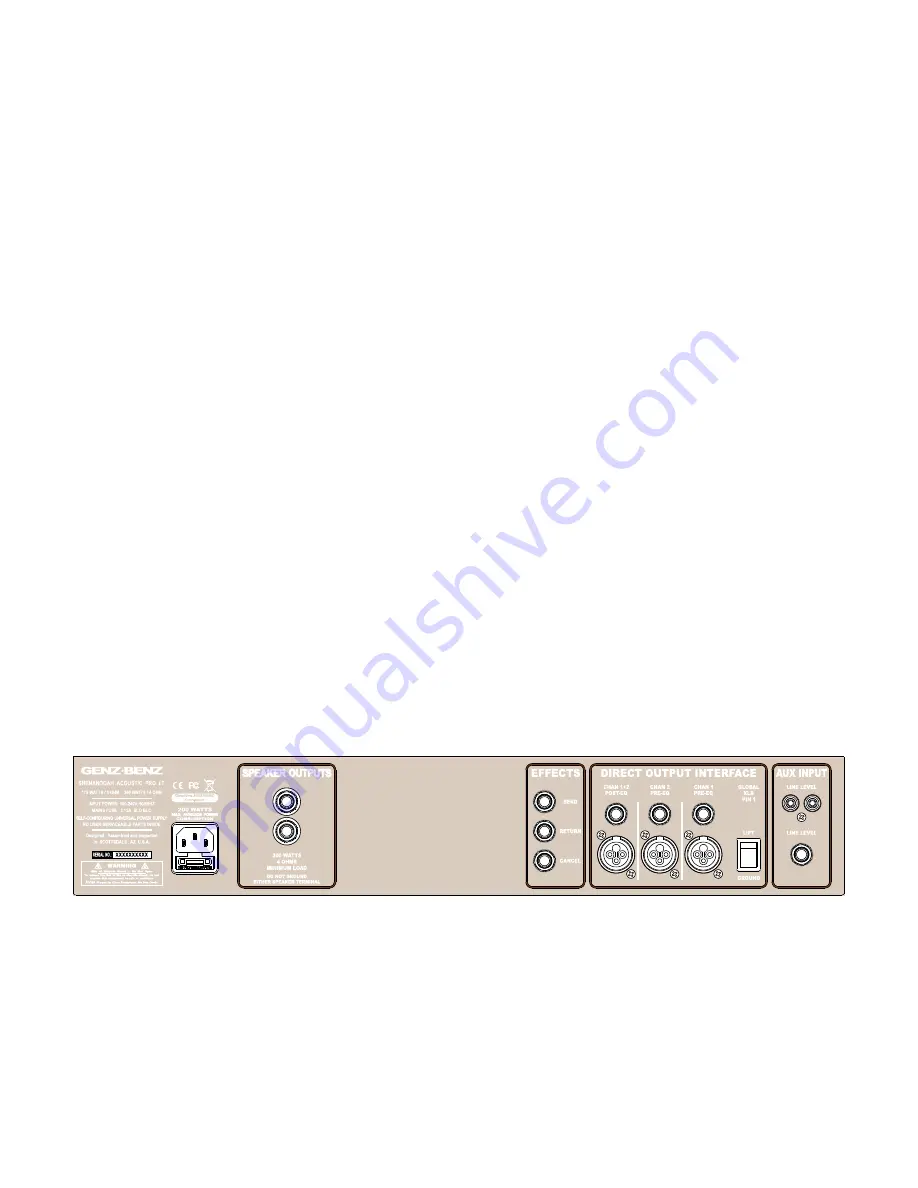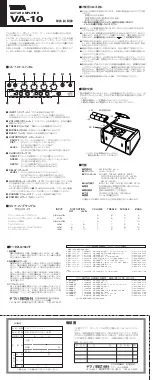
BACK PANEL
SPEAKER OUTPUTS
– Two ¼” output jacks are provided for connection to your speakers, one is used for the
internal combo speaker and the other is used for connection to an external speaker. Do not ground either terminal of
these jacks, or short the terminals together.
4
HIGH FREQUENCY EQ
- The corner frequency of the high frequency section is 8 kHz, shelving curve type and
provides cut or boost of 15db. This frequency is especially useful for taming the bright harshness of some
mandolins, violins, brass and reeds. It can also be used to help acoustic guitars, cellos and flutes cut through other
players in loud club situations, or where drums are present.
MIDRANGE EQ
- The “sweep mid” section features an independent midrange equalizer, peaking curve type, with over
12dB of cut or boost and a bandwidth approximately 1 octave wide. The center frequencies of these equalization filters
are continuously user adjustable from 250 Hz to 5kHz with the corresponding frequency control. These filters are typi
-
cally (but not always) used to reduce or remove offending frequencies in the instrument’s pick-up response. Removing
only the minimum amount necessary will yield the most acoustically rewarding results. The easiest and most repeatable
way to determine the offending frequency range is to boost the mid level somewhat (but not to the point of feedback)
and while playing, sweep the frequency control slowly across its range. You may need a third hand until it becomes
second nature, but soon you will find out just how quick it can be. You will hear a clear and obvious accentuation of the
“ugliness” you wish to remove. Then, reduce the gain control until the sound you desire is attained. The ear is a most
sensitive and discriminating piece of test equipment when used in this manner — another good reason to protect them!
This is the way many touring sound engineers equalize, since it is quick, accurate and repeatable. Occasionally, you
will find need to use the mid section in “boost” mode, particularly common when adding higher midrange (bite) to an
otherwise dull instrument, or adding low mid “body” to an otherwise thin sound. Spend some time experimenting so that
the process becomes creative as well as corrective.
AUXILIARY INPUT LEVEL CONTROL
– The Shenandoah™ Acoustic Pro LT is equipped with both ¼” and dual RCA
aux. input jacks and aux. level control. These rear panel jacks are internally summed, and feed the stereo mix via the
aux. level control. Both aux. inputs are line level, for use with drum machines, CD, MP3 and tape players.
MASTER VOLUME
– The master volume control adjusts the overall volume of the mix of channel 1, channel 2, aux.
input and effects return. Typically, best results are obtained when this control is operated between the 9:00 and 3:00
positions.
MASTER STATUS LED INDICATORS
- The LED’s are provided in the master suite and display the operational states
of the amplifier. There will be a slight delay during turn on activating the stand-by LED. The operate LED will come on
when the unit is turned on. The signal LED measures the presence of an audio signal passing through the power amp.


























